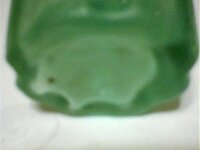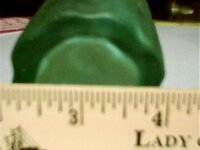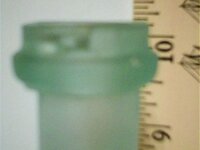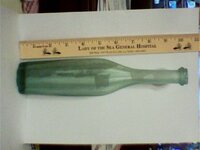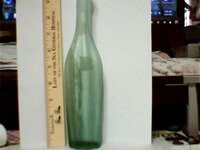treasureseeker51
Jr. Member
- Jun 10, 2005
- 20
- 4
i found this bottle on a beach in southeastern louisiana after katrina and have not been able to find any info on it. could you id it for me. thanks in advance for any help. on pic # 5 the bottom in concave , very smooth and no markings anywhere on the bottle. it has a faint line on both sides as if it was made in a mold, but it is very faint. the shape is odd by the way it leans over to one side just a little and is not uniform all around. it has a couple of dentlike defects on the side of the lean. good luck on solving this one.


